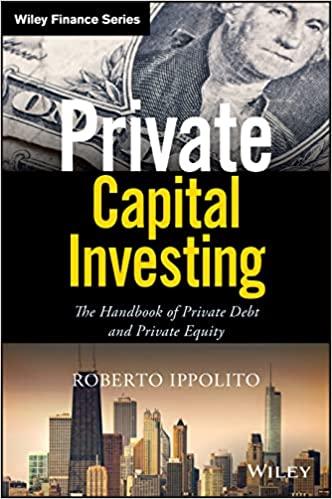Question
Problem 19: An investment of $80,000 generates a net annual income of $30,000 for four years. Assuming an external reinvestment rate = MARR = 10%,
Problem 19: An investment of $80,000 generates a net annual income of $30,000 for four years. Assuming an external reinvestment rate = MARR = 10%, what is the external rate of return (ERR) for this investment?
Problem 20: A company paid a $100,000 for the purchase of an equipment that is expected to have an 8-year useful life, after which the salvage value is estimated at $20,000. This equipment will generate a net income of $10,000 at EOY 1 which increases by 10% per year thereafter. If the effective income tax rate is 15%, what is the income tax due at the end of the fifth year of this equipment in operation? Use the straight line depreciation method.
Problem 21: Three mutually exclusive investment alternatives (A, B, and C) are considered where Alt A has the lowest capital investment and Alt C has the highest capital investment. The internal rate of return (IRR) values for the three alternatives are as follows: IRR (A) = 26.2%; IRR (B) = 24.8%; and IRR (C) = 22.7%. The results of the incremental cash-flow analysis are as follows: IRR (B-A) = 18.7%; IRR (C-A) = 19.3%; IRR (C-B) = 20.5%. Assuming MARR = 20%, which alternative will you select?
Problem 22: A machine costs $300,000 and is expected to save $111,837.5 per year while in operation. Using a 12% interest rate, what is the discounted payback period?

Step by Step Solution
There are 3 Steps involved in it
Step: 1

Get Instant Access to Expert-Tailored Solutions
See step-by-step solutions with expert insights and AI powered tools for academic success
Step: 2

Step: 3

Ace Your Homework with AI
Get the answers you need in no time with our AI-driven, step-by-step assistance
Get Started


